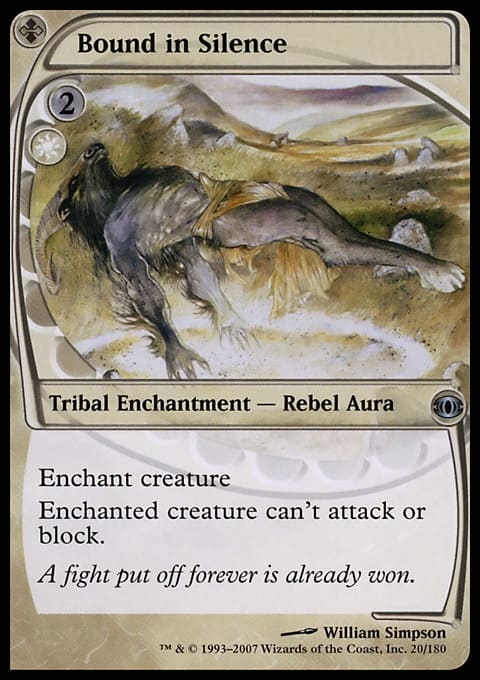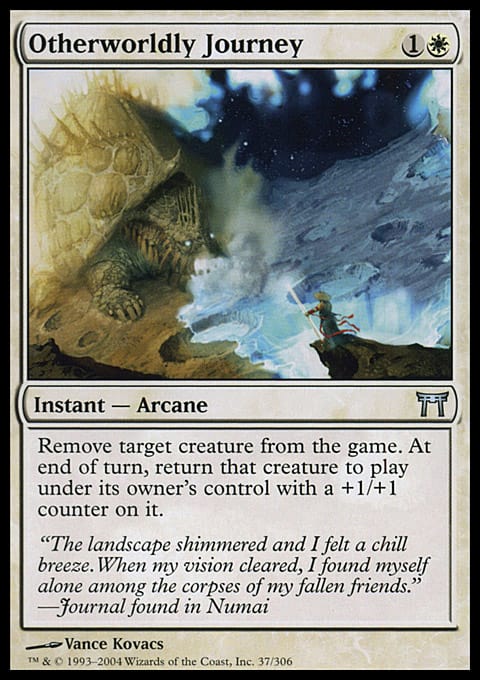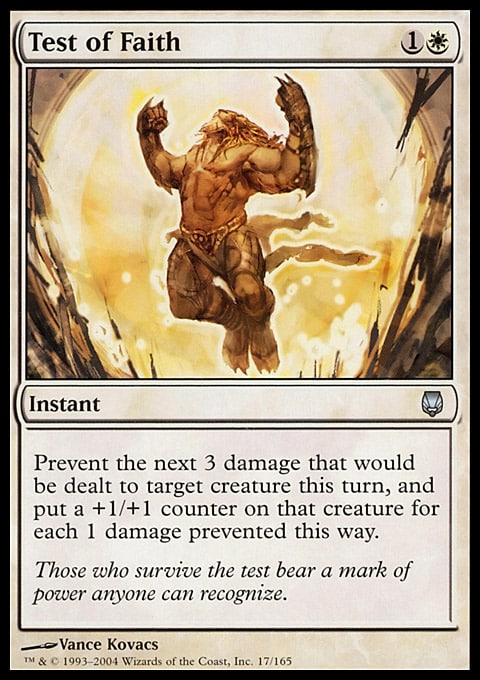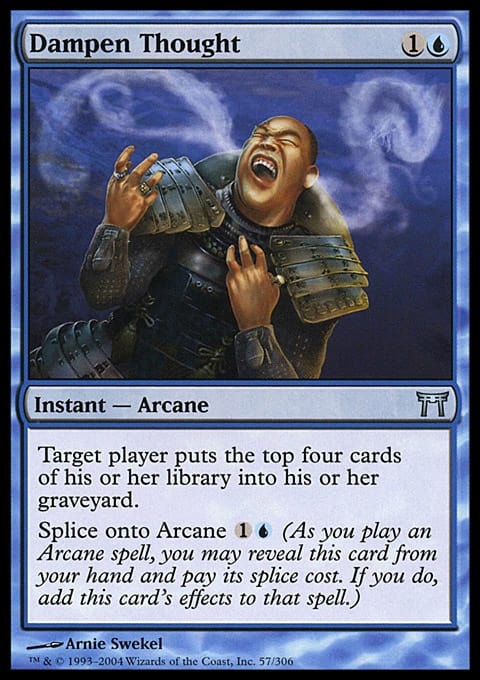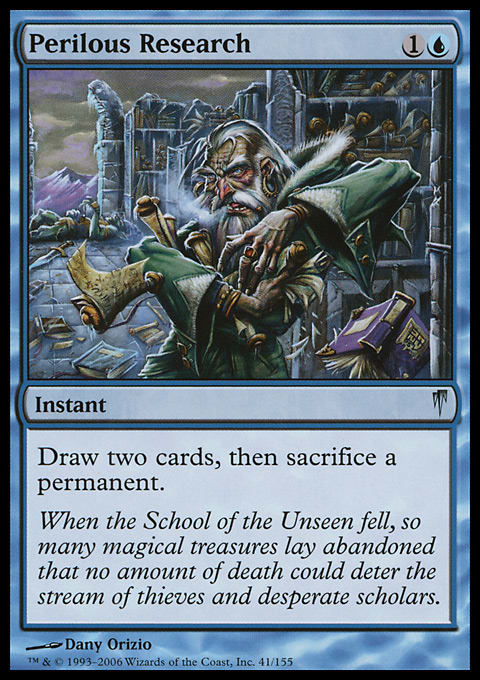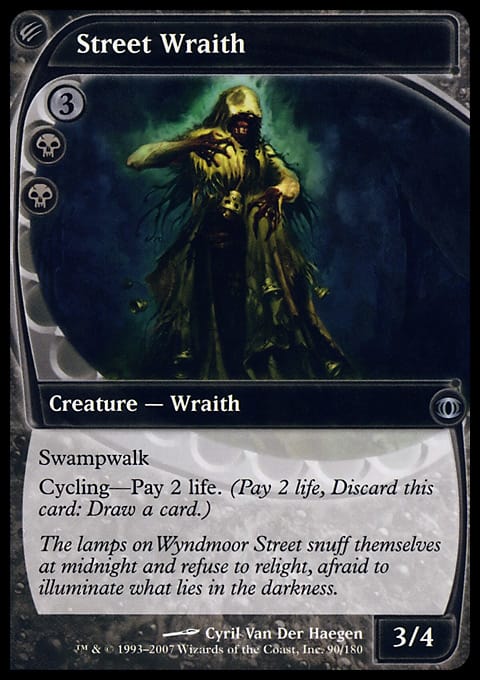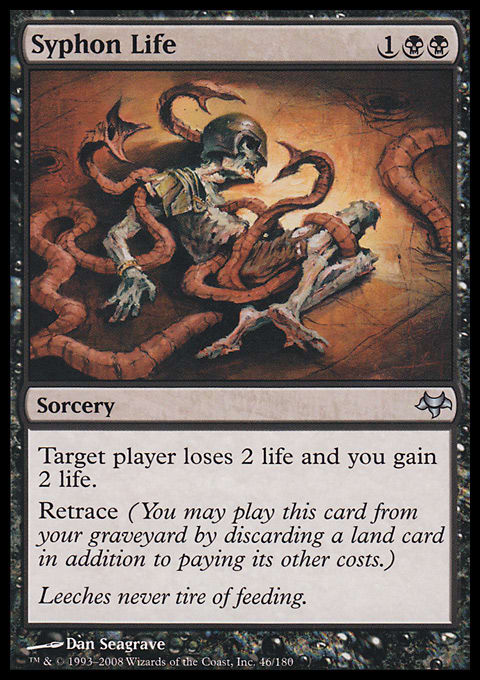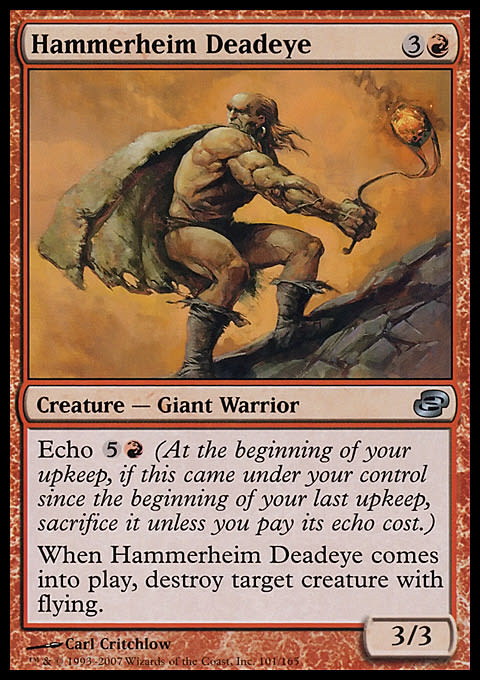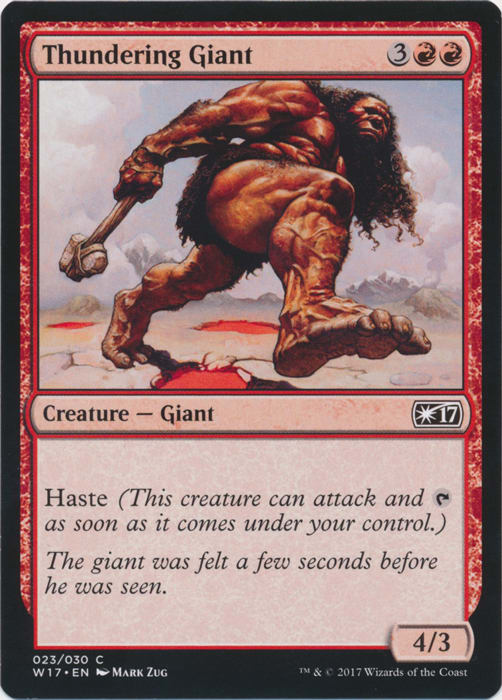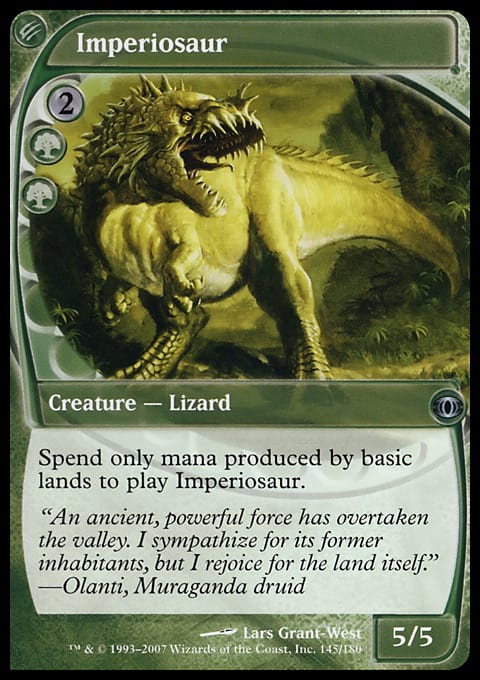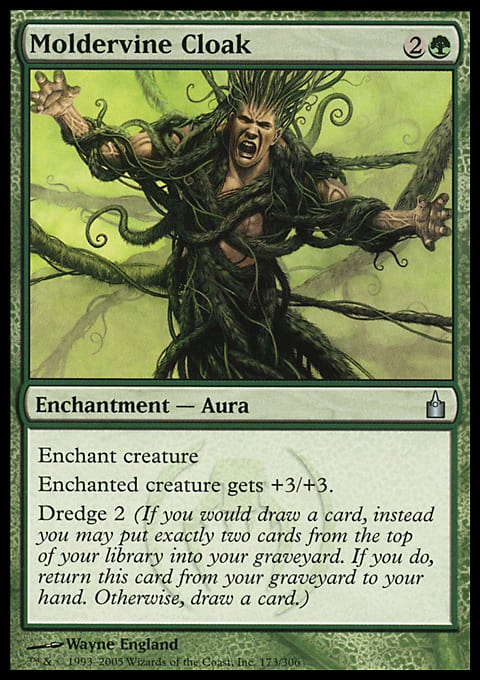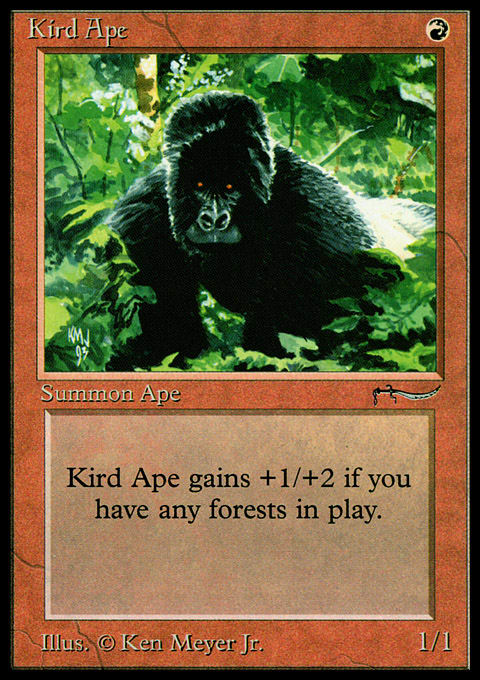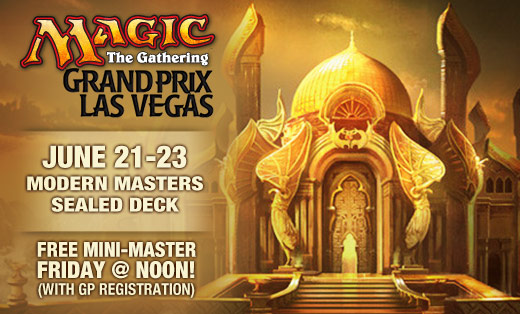This is the third Cube update within two months. Thanks to my laggardness in sharing the Gatecrash Pauper Cube update and then my tight turn around for the Dragon's Maze Pauper Cube update, we're on a breakneck pace for Pauper Cube changes. And with Magic 2014 around the corner, we're on track for four updates in three months.
Change is a good thing.
What Modern Masters brought to Magic was real change:
- The return of an all-reprint set that was exciting for players of all types
- A unique, complex Limited format that is as close to a Cube as any Magic set yet
- Rarity shifts for cards that impacted multiple formats, including Cube
Thanks to the quick work of @mtgcolorpie and @norbert88, I was able to specifically narrow down to the list of cards printed as commons for the first time:
That's just sixteen "new" cards for Pauper. The number that made it into my Cube? Eleven.
Change is a very good thing.
Since there are only a few that didn't make the cut, we're going to touch on every card and what it means (or doesn't) for Pauper Cubes. If you want just the updates, there's a table at the end of the article—or you can visit the Change Log tab of the Pauper Cube spoiler.
Of course, if you want to see what both I and Drew Levin, who helped me with this update, thought and considered, you'll have to read on.
White
Bound in Silence is "just" Pacifism, albeit 1 mana more. If your Cube has a Rebel chain theme, the ability to fetch removal is outstanding. However, without the tutoring ability, Bound in Silence is just an additional-upside-lacking Recumbent Bliss.
While I was at first excited for another piece of efficient removal—and pulled out Kirtar's Desire for it—it dawned on me that Recumbent Bliss is both better for my Cube and a card that wasn't necessary. While I had erred in forgetting about Recumbent Bliss and the total removal count in white (which sat at twenty-eight), it was easy to undo a change when you check afterward. (We had settled on "upsizing" Kirtar's Desire, which we'll come back to later.)
Otherworldly Journey is the stepson of Flicker. It's an instant, saving a creature as Cloudshift does, but it makes you wait for the +1/+1 counter. While white is full of sorcery-speed removal, it's also a color without many tricks. White is an aggressive, evasive color, but the commons-only restriction limits the total power available early in any color's curve.
That's where tricks like Otherworldly Journey come in: By saving a creature and simultaneously improving, aggressive decks can use their lower curves to keep pace through the midgame. To make room for it in the Cube, Kirtar's Desire finally fell away.
Speaking of tricks, Test of Faith is among the most unique out there. While Healing Salve is nothing to write home about, changing basic damage prevention into a replacement effect that puts +1/+1 counters on your creature is relevant.
My Pauper Cube focuses on creature combat. A card like AWOL, which is what I replaced, usually removes one of your opponent's cards, specifically if it's an attacking creature or something used to save it. Test of Faith will usually remove two—thanks to its two abilities working in concert.
Blue
When you could draft "the Dampen Thought deck" in Champions of Kamigawa, it was an amazing time to play blue. For the first time, a nondamage win condition (when drafted correctly) was among the better decks to find in a Limited format.
However, the core of the deck required multiple copies of Dampen Thought, multiple other Arcane spells to splice it onto, and multiple ways to stymie an opponent's progress. Dampen Thought has no such support in my Cube, which is built to make the combat step the most important part of every turn. I passed on Dampen Thoughts.
When I brought up Petals of Insight to the solid crew of cubers I'm friends with on Facebook, Eric Klug summed it as this: "Treat it as a 5-mana Harmonize." There isn't anything else quite like this at common. Cubes that allow Magic Online's Masters Edition series of rarity shifts have Brilliant Plan available, and Petals of Insight is still better.
The problem in my Cube is that blue want to stay as cheap as possible.
Every other color has potent aggression, and blue needs the ability to use its early mana at the same pace. Adding Petals of Insight couldn't come at the expense of a cheaper card. While choices are limited at 5 and 6 mana, Drew suggested Mnemonic Wall. It serves a similar purpose (generate value), but Petals of Insight can try again another turn if this one doesn't work out.
While I believe Mnemonic Wall is good, Petals of Insight should be just as good or better for several blue decks—particularly the G/U ramp deck: Finding what you worked to ramp into should be easier now.
Perilous Research is a pet card of mine in Commander. Extracting value while messing with an opponent's plans in sweet. In this Cube, where there's plenty of removal and blocking, mitigating an all-downside action by an opponent makes sense.
Perilous Research should have no trouble finding its place in my Cube, but finding a card to replace was tricky. While Frantic Search is among the best get-rid-of-these-lands-in-my-hand cards, Perilous Research has broader utility and leaves you up a full card.
Black
Street Wraith is an interesting card that plays into the subtheme I've given black in the Cube: resource conversion. Black's spell land representative is Barren Moor. (See Sejiri Steppe, etc.) Black has Pestilence and Crypt Rats, which turn mana into damage. Black also has recursion spells, transforming a noncreature card into a creature.
Street Wraith is an easy way to add card-draw to black—by converting life into a card, that plays well with the ability to get it back repeatedly. Since it's ![]()
![]() and there are plenty of other cheap creatures for black to cast aggressively, Highborn Ghoul made room for it.
and there are plenty of other cheap creatures for black to cast aggressively, Highborn Ghoul made room for it.
Another resource-conversion card, Syphon Life is one way for a control deck to grind the game away. U/B typically has no trouble keeping most creatures off the battlefield, but it has no way to deal damage without creatures that don’t also deal damage to U/B. Syphon Life solves the life issue of Pestilence and other effects while giving the control color additional reach.
Since Syphon Life has a ![]()
![]() mana cost, I again looked at what double-costed cards were weak. At
mana cost, I again looked at what double-costed cards were weak. At ![]()
![]()
![]() , Cadaver Imp is the unexciting combination two unexciting cards: Raise Dead and a 1/1 flying for
, Cadaver Imp is the unexciting combination two unexciting cards: Raise Dead and a 1/1 flying for ![]()
![]() . It's the weakest get-back-a-guy effects in the Cube, making it the ideal candidate to try our Syphon Life.
. It's the weakest get-back-a-guy effects in the Cube, making it the ideal candidate to try our Syphon Life.
Warren Weirding is Cruel Edict with a nominal upside for Goblin-heavy decks. Cruel Edict is already out of the Cube since at sorcery speed, its effectiveness is mediocre compared to other removal options, so a harder-to-use version that's outside of a heavy Goblin theme just wasn't compelling.
Red
Hammerheim Deadeye is a Hill Giant plus Plummet for the bargain price of 10 mana. Compared to Deadshot Minotaur, which is almost functionally the same by dealing 3 damage, it comes with an extra point of toughness, costs a total of half what Hammerheim Deadeye does, and can even by cycled away in the worst-case scenario, so it's clear that Hammerheim Deadeye leaves a lot to be desired.
Let's compare two cards: Thundering Giant and Gerrard's Irregulars. Gerrard's Irregulars has trample but only 2 toughness. Trading trample for that extra point on Thundering Giant is a major shift in utility in the Cube. So many creatures have 2 power that Thundering Giant should cause more double-blocks than before—or force a better creature to be traded. Upping the cost to include ![]()
![]() , instead of just
, instead of just ![]() , helps put this card into decks that are firmly red as well.
, helps put this card into decks that are firmly red as well.
Green
Hama Kami recycles Arcane spells. Our Cube doesn't use them, and as a theme, it's still relatively weak. This was easy to gloss over, but don't forget about it if you really want to push it along.
Pauper Cube mana bases are very different than most other Cubes. Even with the full cycle of Guildgates and bounce lands, most decks rely heavily on basic lands to do their work. In a world where basic lands are the name of the game, a 5/5 for 4 mana that requires you to use them is amazing.
Land Aid ‘04 is one of those strange, duplicative cards that I always enjoyed seeing but rarely made an impact. As a color-fixing card, ![]()
![]() made it onerous to work with. Even in green-heavy ramp decks, access to plenty of other easier-to-cast ramp spells make Land Aid ‘04 stick out like a sore thumb. Imperiosaur costs
made it onerous to work with. Even in green-heavy ramp decks, access to plenty of other easier-to-cast ramp spells make Land Aid ‘04 stick out like a sore thumb. Imperiosaur costs ![]()
![]() , but at 4 mana, it's a snap to cast when it's relevant.
, but at 4 mana, it's a snap to cast when it's relevant.
Moldervine Cloak is an awesome Aura for the G/W hexproof decks and creature-laden B/G decks. Replacing a draw to make a +3/+3 Aura will allow even a lowly Llanowar Elves to provide serious pressure on opponents.
The most obvious card to replace is Reclaim, which is just Raise Dead on steroids. While the flexibility to bring back anything can be handy, the consistence and power of Moldervine Cloak overshadows it considerably. Reclaim does little on its own. Moldervine Cloak is similar, but there's rarely a lack of creatures to work with.
One of the issues that faces ramp decks in my Cube is the lack of value at the top end. While Maul Splicer, Capsize, and Sprout Swarm can work, those cards are often stretched to other decks. It's rare the ramp deck has all three, and it's become worse since the Cube expanded.
Walker of the Grove is a stellar value card. A 7/7 for 8 mana is okay, and so is a 4/4 for 5. Getting either one as needed, and perhaps both through an opponent's removal spell, is efficiency, as Drew keenly pointed out. With plenty of better options at 5 mana for other decks, Walker of the Grove is a great way to ensure the ramp deck have some value, too.
Among the weakest, though interesting, cards has been Nightshade Peddler. While giving out deathtouch has broken several stalemates, Nightshade Peddler just hasn't delivered at a higher level and demands that there are other creatures handy as well. This middling 2-mana creature won't be missed.
Colorless
Without enough artifact creatures, modular goes to waste. Arcbound Wanderer can be a 5/5 for 6 mana, but it requires the full ![]()
![]()
![]()
![]()
![]()
![]() monty to do it. For that cost, I'd rather have Skyreach Manta (also a common in Modern Masters). Unless your Cube is packed full of artifact creatures and color fixers, Arcbound Wanderer forgettable.
monty to do it. For that cost, I'd rather have Skyreach Manta (also a common in Modern Masters). Unless your Cube is packed full of artifact creatures and color fixers, Arcbound Wanderer forgettable.
Summary
Here are all the changes in one shot:
Remember that you can always find the most up-to-date spoiler online. Check back in about a month for the Magic 2014 Pauper Cube update!
Bonus: On Kird Ape
@the_stybs @hackworth and I don't really have a big love for Kird Ape... I think it's mediocre... but in pauper I think he fills a hole.
— Bryan Climer (@Revarien) June 5, 2013
Questions from Twitter are always awesome, and looking back at the update that took Kird Ape out of the Cube (Gatecrash Pauper Cube update), it's clear there're some blanks that were never filled in. So let me explain.
Kird Ape is mediocre.
Let's be clear about what Kird Ape is:
- A 1-drop that requires red.
- A creature that, to be efficient, requires a Forest.
- Below average in every other situation.
To make Kird Ape work you have to be playing a R/G deck. To make Kird Ape exceptional, you have to be playing it on turn one or two, and you need to have a red source and Forest in play to do it. Here's the simplest Kird Ape deck possible in my Cube:
While I've written about hypergeometric distribution on my Cube blog, and Chris Mascioli did the same here on GatheringMagic, I don't expect this type of math to be intuitive or accessible for everyone. However, using it makes my point about Kird Ape clear.
Even on the play by turn three, the odds having Kird Ape, and up to two Mountains and Forests, doesn't cross 3%. It stays small through even more turns.
The fact is that counting on having one specific card early, even in a forty-card deck, doesn't work. This principle is exactly why I like having some redundant (functionally similar/identical) effects in the Cube: Good Limited environments have things you can count on seeing no matter what.
Yes, Kird Ape can be a 1-mana 2/3 later in the game. A 2/3 is also underwhelming later in the game. And because it requires the use of two colors, Kird Ape is a de facto R/G card. For 1 more mana (Pit Fight), I'd rather have an instant-speed removal spell that plays to the strength of the R/G deck, which is a midrange powerhouse with big guys backed by burn, that is also easier to cast and matters more later in the game.
Kird Ape's best-case scenario is just good. Pit Fight's average-case scenario is great. This is no contest.
Other 1-drops (see Icatian Javelineers) can fit into a wider range of decks. Kird Ape, as a R/G card, doesn't fit into any alternatives. This is the similar reasoning I use for skipping Cloudfin Raptor: Needing it very early in every game leads to disappointment. For bonus points, we can talk about Stormscape Apprentice next time if you want. (I've never explained my tri-color section!)
Thanks again for the great question!
















